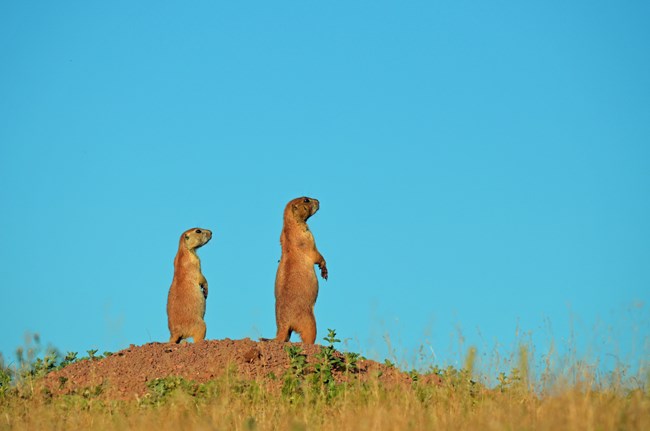Last updated: April 30, 2021
Article
Prairie Dog Mothers of Lewis and Clark Fame

NPS photo
In his description, Thomas Jefferson wasn’t too far off: prairie dogs are in the squirrel family and are biological relatives of the ground hog. He did get one thing wrong, however, and that is that prairie dogs can be tough! The have sharp claws and a powerful bite they use to defend themselves and their families from predators.
In their natural habitat, prairie dogs are very family oriented; they burrow underground and live together in groups called towns, and when they meet new members, they introduce themselves with a prairie dog kiss, or nuzzle. Being very social creatures, they often share common places for sleeping, bathrooms, and even nurseries for their babies. When prairie dog mothers are ready to give birth, they’ll crawl into the burrows dedicated for the new mothers and will give birth to their hairless babies, giving them endless attention and care.
Prairie dog babies won’t leave their mothers burrow until they’re about six weeks old, when they’ll begin to stray away from their mother’s care. Even then, they might not leave the group until they’re about a year old. As a group, families work together to protect each other from harm.
